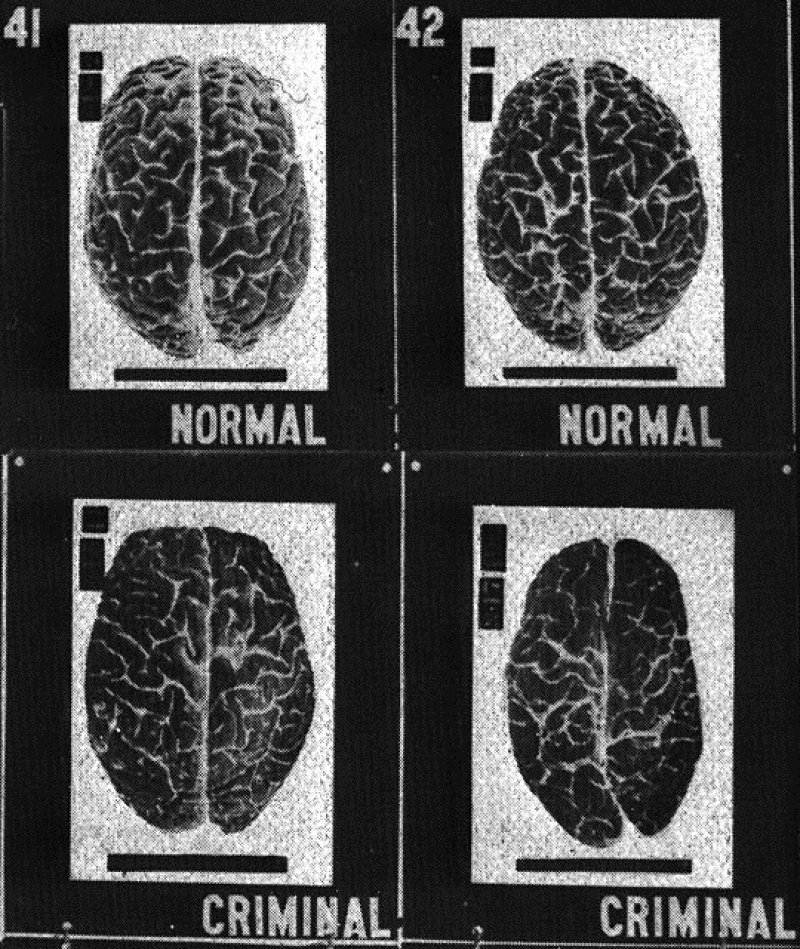Can neuroscience shed light on why people turn violent? Are perpetrators of violence suffering from a medical condition that demands a public health reaction that might radically alter the way criminals—or those views warily—are handled? Did those genetically endowed lesions in my frontal lobe make me do it? Adrian Raine, author of the recently released new book The Anatomy of Violence: The Biological Roots of Crime, believes that may be so. Raines taps into the emerging field of neurocriminology, which takes the current fascination with neuroscience —many sober scientists would say overhyped fad—into uncharted legal territory. The book has garnered interesting reviews, most notably in New Scientist (“makes a convincing case that violent criminals are biologically different from the rest of us”) and New York Journal of Books (“The Anatomy of Violence will convince even the most skeptical that there is a genetic or biological cause for the violence exhibited by psychopaths across all cultures.) Not so fast, says Michael Gazzinga in a provocative analysis in The Wall Street Journal. Gazzinga follows the logic of this emerging science as it has made its way into the legal system. In the UK, for example, a new law allows authorities to preemptively lock up as a preventive measure a person deemed suffering from “dangerous and serious personality disorder.” Certainly, as Raine suggests, new perspectives about how the brain works are both interesting and potentially important. Biology undoubtedly plays critical roles in violence. However, considering the current empirically frothy, loosey-goosey state of the ‘science’ of neuroscience, appeals for socially complicated preemptive public health responses and experimental legal interventions may be decidedly premature.
Bad brains: Did my DNA make me do it?
Jon Entine | May 6, 2013

{{ reviewsTotal }}{{ options.labels.singularReviewCountLabel }}
{{ reviewsTotal }}{{ options.labels.pluralReviewCountLabel }}
{{ options.labels.newReviewButton }}
{{ userData.canReview.message }}
 |
Infographics | More... |

Are pesticide residues on food something to worry about?
In 1962, Rachel Carson’s Silent Spring drew attention to pesticides and their possible dangers to humans, birds, mammals and the ...
Most Popular
 Viewpoint: The organic food industry is a $180 billion marketing fraud
Viewpoint: The organic food industry is a $180 billion marketing fraud  Is tilapia a human-made freak that we should avoid — or an evolutionary rockstar?
Is tilapia a human-made freak that we should avoid — or an evolutionary rockstar?  How Wegovy and Ozempic could transform our food systems
How Wegovy and Ozempic could transform our food systems  Don’t believe the hype: Organic produce is not healthier than conventionally-grown fruit and vegetables
Don’t believe the hype: Organic produce is not healthier than conventionally-grown fruit and vegetables  Viewpoint: ‘If we follow science, organic food loses its apparent advantages’ — Harvard professor debunks organic produce myths
Viewpoint: ‘If we follow science, organic food loses its apparent advantages’ — Harvard professor debunks organic produce myths  Want to improve cholesterol and blood pressure? Swapping out meat for plant-based alternatives may not provide heart health benefits, study suggests
Want to improve cholesterol and blood pressure? Swapping out meat for plant-based alternatives may not provide heart health benefits, study suggests  Rollout of Vitamin A enhanced GMO Golden Rice in the Philippines blocked by surprise court ruling
Rollout of Vitamin A enhanced GMO Golden Rice in the Philippines blocked by surprise court ruling  Climate change agriculture: GM crops, no-till farming and judicious use of glyphosate and other herbicides help address disruptions, Canadian study finds
Climate change agriculture: GM crops, no-till farming and judicious use of glyphosate and other herbicides help address disruptions, Canadian study finds  Embryos aren’t female by ‘default’ after all, study shows
Embryos aren’t female by ‘default’ after all, study shows  How IARC and other ‘independent’ global cancer assessment agencies can distort the public’s understanding of the risks of cancer
How IARC and other ‘independent’ global cancer assessment agencies can distort the public’s understanding of the risks of cancer


















